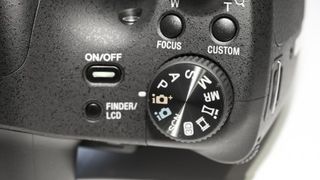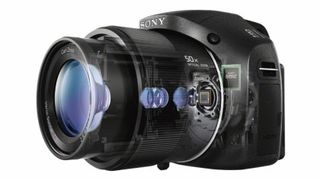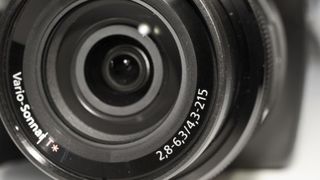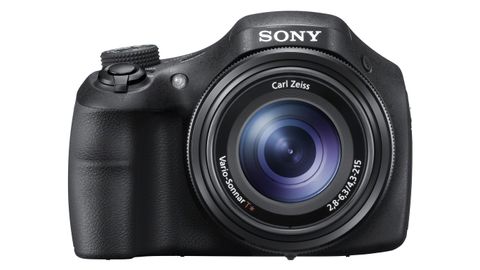Why you can trust TechRadar
As established in our introduction, the Sony HX300 is a chunky beast. And with chunky dimensions of 129.6 x 93.2 x 103.2mm (5.1 x 3.7 x 4.1 inches), it's one for the camera bag or wearing around your neck rather than for squeezing into a pocket or purse.
Weight too is a hefty 650g (1lb 7oz) with the NP-BX1 lithium ion battery and choice of either an SD card or memory stick inserted. At least it feels like we are getting our money's worth, and certainly this is a camera that feels more comfortable to grip with both hands, thereby providing extra stability when shooting handheld at longer focal lengths.
Because the camera is styled like a consumer DSLR, from the get go we were expecting a DSLR-like handling experience. On the Sony HX300 this extends to a funky metal-ridged manual ring for zooming and focusing - flick a switch on the lens barrel to alternate between these two options - plus a jog dial and customisable buttons in order to retain favourite settings.

Naturally, aside from the creative filter effects, we get the creative quartet of program, aperture priority, shutter priority and manual shooting mode settings ranged around a bottle top-shaped mode dial set behind the shutter release. This button is encircled by another means of adjusting the zoom, via a regular zoom lever.
As well as the mode dial featuring the regular P,A,S,M quartet, we also get two auto modes, a scene mode, video mode, intelligent Sweep Panorama mode and even a dedicated 3D option; 11 choices in all.
A red video record button sits top-right of the back plate where it falls under the thumb, ready to instantly commence filming with a single press, whereby the view on the rear LCD narrows to display a 16:9 format image.

In truth the Sony HX300's backplate controls are more redolent of a compact camera than a DSLR, such is their pared-down simplicity.
Thus we also get a familiar four-way control pad alongside the angle-adjustable LCD screen, which can be tilted up or angled down, but not fully swung out parallel to the body or turned towards the subject for self-portrait shots. It's not a touchscreen either, but it does feel large enough that such a feature could have been implemented.
On-screen menu options are bright and clear, with the initial function menu extending the height of the screen on its left-hand side, its options tabbed through in conjunction with the multi-directional control pad.

We had to immediately disable the operational beep sound though, since it was so loud that it distracted us and our subjects.
Confusingly, at first we couldn't locate how to adjust ISO from this menu - it simply isn't listed. It turns out that that a spin of the DSLR-style command wheel top-right of the backplate highlights settings such as ISO and aperture on-screen, so that you can tab between them with a press of said wheel.
Perhaps we're wrong to expect everything, but we missed the fact that Sony hasn't provided an eye sensor alongside the camera's electronic viewfinder, to automatically switch it on and deactivate the screen below.

Instead we get a simple finder/LCD button on the Sony HX300's top plate, just behind the main power button. The location here means it's easy to overlook, and we'd have preferred to have this control adjacent to the EVF itself on the backplate. Instead, Sony has chosen to put the video record button in this position.
In short, though more or less every control we expected falls within reasonable reach of finger or thumb, we didn't find ourselves stretching or grasping in the heat of the image-making action.

When not wrestling wild bears or leaping tall buildings in a single bound, Gavin Stoker can be found editing British Photographic Industry News, the UK's longest running and only photo trade title. He has over 25 years of camera testing and reviewing under his belt.

Annual cybersecurity training isn’t working, so what’s the alternative?

How manufacturers can create a sustainable business model

Getting ChatGPT to run on a NAS is actually worth exploring — tech enthusiast puts an Nvidia RTX GPU in a 12-bay NAS powered by an AMD EPYC CPU, and the results are surprising
